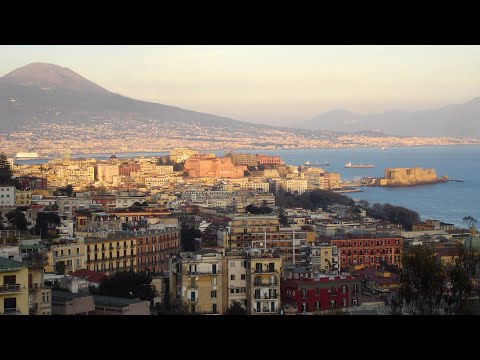
Nestled in the shadow of the brooding Mount Vesuvius, Naples and Pompeii stand as two iconic symbols of Italy’s rich historical tapestry. One is a bustling urban sprawl steeped in vibrant culture and chaotic charm; the other, a silent sentinel of life frozen in time. Together, they offer a fascinating glimpse into the past and present of Italian life.
#### Naples: A City of Contrasts
Naples, or Napoli, as it is known in Italian, is the third-largest city in Italy, following Rome and Milan. With its origins stretching back to the 2nd millennium BCE, Naples is one of the oldest continuously inhabited urban areas in the world. The city’s history is palpable in its streets, architecture, and the very demeanor of its people.
The heart of Naples beats strongest in its historic center which has earned UNESCO World Heritage status. This area alone bristles with artistic and architectural gems like the Cattedrale di San Gennaro (Cathedral of Naples), where the blood of St. Gennaro is famously said to liquefy twice a year. Nearby, the opulent Royal Palace and Teatro di San Carlo, one of the oldest operating theatres in Europe, offer further glimpses into a grandiose past.
Naples’ character also shines through its culinary heritage. As the birthplace of pizza, specifically Margherita pizza which was created to honor Queen Margherita using tomatoes (red), mozzarella (white), and basil (green) reflecting the colors of the Italian flag—Naples takes culinary arts seriously. The city’s food scene provides an accessible taste not just to its flavors but also to its lively street life.
#### Pompeii: A Moment Captured in Time
Just a short journey from Naples lies Pompeii, starkly contrasting with Napoli’s bustling vibrancy. In AD 79, Mount Vesuvius erupted cataclysmically leaving this once-thriving Roman city buried under volcanic ash for nearly 1,700 years before its rediscovery.
Today, Pompeii stands as one of the most important archeological sites worldwide offering unprecedented insights into ancient Roman life. Walking through Pompeii’s streets can feel eerie yet captivating as various structures from homes to bakeries to brothels remain remarkably preserved. The site houses haunting plaster casts that capture victims’ final moments—creating poignant reflections on human fragility.
Art lovers will appreciate Pompeii for its frescoes which adorn many walls depicting various aspects from mythological scenes to everyday activities showcasing Roman artistic flair that continues to influence aesthetics millennia later.
#### Connecting Past with Present
Visiting both Naples and Pompeii presents an opportunity not only for sightseeing but also for understanding societal shifts—from ancient civilizations frozen by volcanic eruptions at Pompeii to modern pulsations within Napoli’s lively neighborhoods.
Moreover, these destinations highlight resilience amidst devastation; while Vesuvius remains an ominous reminder lurking near both locations it has also shaped them culturally including their agriculture with fertile volcanic soils aiding local produce such as grapes leading up toward world-renowned wines like Lacryma Christi.
#### Conclusion
In conclusion, combining trips to both Naples and Pompeii allows travelers an enriching experience encapsulating spectacular history alongside endearing modern-day culture—one where echoes from past grandeur inform everyday adventures creating unforgettable moments rooted deeply within Italy’s heartrending landscapes.
